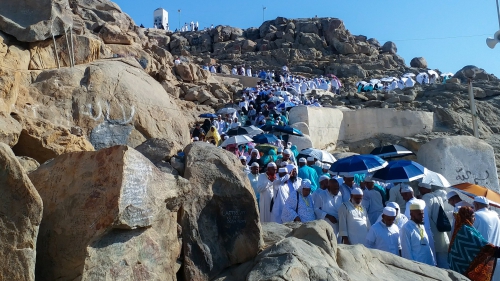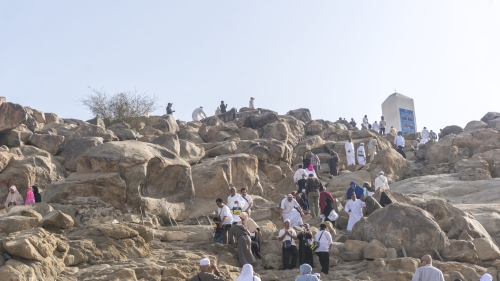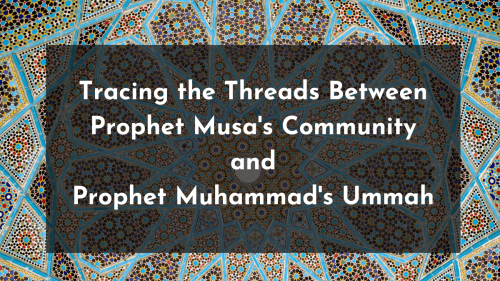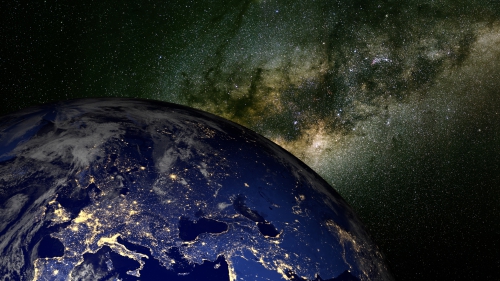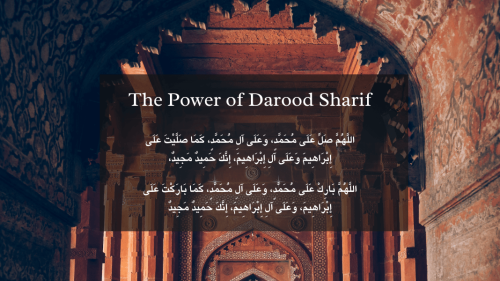Anti-Racism: Prophet Muhammad’s Example

Relations between different ethnic and religious groups are deteriorating at a rapid pace. Muslims are pitted against non-Muslims and black and brown people are pitted against white.
What is needed now more than ever is a role model whose teachings counter bigotry and whose acts serve as a model for coexistence. I believe that role model is none other than Prophet Muhammad.
Approximately 1,400 years before the Civil Rights movement in the US and the anti-apartheid campaign in South Africa, the Prophet Muhammad dealt with the issues of xenophobia and prejudice in Arabia. In this short piece, I highlight how the Prophet fought against the idea of judging individuals and groups based solely on their skin color and ancestry.
Prophet Muhammad’s anti-racist views are seen in his friendship with Bilal ibn Rabah, a black slave who rose to a leading position within the Muslim community of 7th century Arabia. One story relates how Muhammad defended Bilal after Abu Dharr Al-Ghifari, one of the Prophet’s companions, called Bilal “the son of a black woman.” Annoyed with this emphasis of identifying people by skin color, Muhammad criticized Abu Dharr by stating “you are the man who still has the traits of ignorance in him.”
The Prophet’s reference to Abu Dharr’s ignorance refers to the “pre-Islamic” state of jahiliyyah, an Arabic term meaning “the state of ignorance of Divine guidance.” This period of Arab history before Muhammad’s arrival was marked by “barbarism” and “lawlessness,” as described in the Quran. The Prophet’s anti-racist mentality helped lead Arabs out of this darkness and into the light by guiding them onto the path of justice and equality.
Bilal, who other Muslims referred to as “master” because of his knowledge and grace, became the muezzin of the Prophet, meaning that he was responsible for calling Muslims to the five daily prayers. In choosing Bilal for this honorable role, Muhammad demonstrated that social exclusion and subordination based upon skin color was not to be permitted in an Islamic society.
Before Muhammad revealed his message, Arabs were overly proud of their tribal and ethnic identities, so much so that tribes and ethnic groups became the social standard of society. The Prophet’s teachings changed all of that. He emphasized the importance of piety as the hallmark of respect. In challenging Abu Dharr, Muhammad showed that he was willing to rebuke even his closest companions if that person denigrated someone because of his or her ethnicity. The Prophet believed that this form of “tribalism,” or al-asabiyyah in Arabic, was cancerous because it drove people to ethnic loyalties even if that meant they supported oppression and injustice.
The Prophet’s Last Sermon at Mount Arafat in 632 AD is perhaps his most noteworthy manifestation of anti-racism.
In his speech, Muhammad stated that “An Arab has no superiority over a non-Arab, nor a non-Arab has any superiority over an Arab ... a white person has no superiority over a black, nor does a black have any superiority over white except by piety and good action.”
The Last Sermon is the culminating point of Muhammad’s life. He challenged a disunited population that was constantly engaged in warfare by calling on people to unite under a banner of humanity. By distancing himself from the tendency to categorize others based upon ethnicity, the Prophet preceded the words of Martin Luther King Jr., whose “I Have a Dream” speech called for African Americans to be judged not by the color of their skin, but by the content of their character.
Muhammad’s message of anti-racism is especially important now in the US. Al-Hajj Malik El-Shabazz, the African American civil rights leader who is more commonly called Malcolm X, reflected Muhammad’s insistence on harmony. After he performed Hajj, the Islamic pilgrimage, El-Shabazz wrote home to his friends that all Muslim pilgrims in Mecca accepted the “Oneness of God.” He added that white people in the US should echo the Muslim pilgrims and “cease to measure and hinder and harm others in terms of their differences in color.” El-Shabazz’s anti-racism perspective mirrors Muhammad’s spirit of friendship and inclusivity. Like the Prophet, El-Shabazz is a role model for the anti-racism movement.
I consider Muhammad to be a quintessential anti-racist figure because he promoted peace and equality. Without a doubt, he advanced human rights in an area of the world that had no previous experience with this practice. Non-Muslims who belittle the Prophet have certainly not considered the examples highlighted above.
To further promote better relations between Muslims and non-Muslims as well as people of different skin colors, it is imperative that media outlets highlight Muhammad’s anti-racist ethos. Rather than being a divisive figure, Muhammad is an inspiration for those working to rid the world of the evil of racism.
Dr. Craig Considine is a scholar, global speaker, media contributor, and public intellectual based at the Department of Sociology at Rice University. He holds a PhD from Trinity College – University of Dublin, an MSc from Royal Holloway – University of London, and a BA from American University in Washington, DC. Dr. Considine is a U.S. Catholic of Irish and Italian descent.
This article is adapted from the original publication in February 2015. His latest book, The Humanity of Muhammad: A Christian View, was released on July 7, 2020.
( Source: Dr. Considine's Blog )
Topics: Anti-Racism, Bigotry, Human Rights, Ignorance, Prophet Muhammad (S), Racism, Xenophobia Values: Equality, Justice
Views: 15570
Related Suggestions







